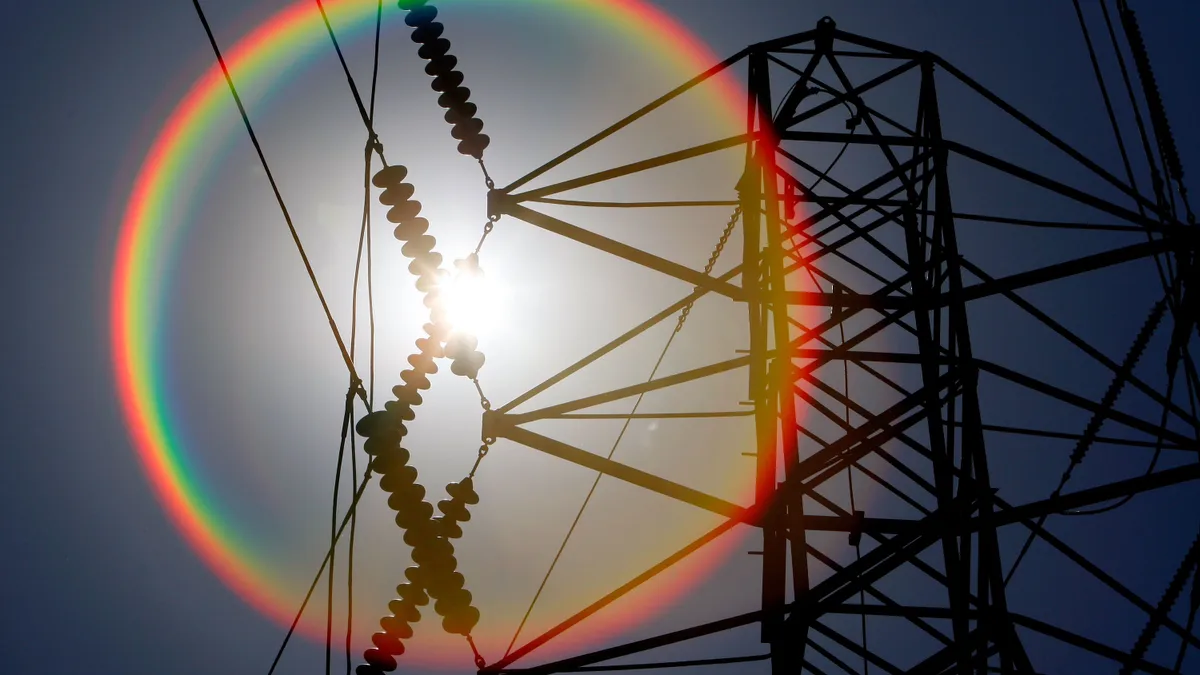Dive Brief:
- The heat wave that spread across the Pacific Northwest over the weekend, leaving utilities racing to alert customers and prepare their systems, is an indication that the region's power sector will need to take a closer look at their reliability planning, experts say.
- At a meeting with Western state governors on Wednesday, President Joe Biden emphasized his administration's commitment to tackling climate impacts like wildfires and extreme heat, telling utility leaders that "we are ready to work with you to make sure that people have access to power, including air conditioning, under these extreme demand conditions, while continuing to advance our climate goals."
- "The biggest lesson learned that everyone needs to look at very closely is what in the world is happening with the weather," Arne Olson, senior partner with Energy and Environmental Economics, said. "Over the long run, we do need to readjust our load forecasts and expectations for that duration and intensity of these heat waves," he added.
Dive Insight:
The Pacific Northwest experienced unprecedented temperatures over the weekend and early this week, with Portland breaking records three days in a row, and touching 116 degrees on Monday. Utilities had begun alerting customers to help conserve electricity during the middle of last week.
On Wednesday, Pacific Power noted in a press release that it did not anticipate power supply issues, but that extreme weather has the potential to produce localized outages. Portland General Electric (PGE) prepared for high demand with extra cooling systems to prevent critical distribution infrastructure from overheating, as well as by having crews on standby over the weekend to respond to outages.
Thousands of PGE customers did experience outages over the weekend, caused not by system planning issues but rather due to strained infrastructure and equipment failure. Although PGE did set peak load records on Sunday and Monday, it was able to meet that demand, utility spokesperson John Farmer said.
"As outages occurred, our teams were very quick to respond. Most outages were addressed within hours [or] maybe half a day," he said.
Pacific Power did not forecast or face any power supply interruptions due to the heat wave, spokesperson Drew Hanson said — the PacifiCorp subsidiary has access to over 16,500 miles of high-voltage transmission lines across ten states, allowing it a multitude of generation resources. While Pacific Power did experience some local outages in its service territory, it isn't clear yet whether those were heat-related or not.
Meanwhile, Avista, which provides electricity to around 400,000 customers in the region, had unplanned outages on Monday due to high temperatures and demand, and planned, targeted outages on Tuesday. The utility asked customers to conserve energy through Thursday from 1 p.m. to 8 p.m., noting that the "unprecedented and sustained extreme high temperatures are putting a strain on the electric system that serves customers."
Power sector faces planning and infrastructure questions
The heat wave could have longer-term implications for system planning in the Pacific Northwest. Although there was largely enough market supply to get power providers through this event, the region could have seen a different result had a few things gone differently, Ben Kujala, director of power planning at the Northwest Power and Conservation Council, said — for instance, the region had more hydropower resources to work with in June than it would in, say, August.
The heatwave was outside of anything the Pacific Northwest has experienced in the past, he said. "And a huge amount of utility planning is based on looking at our previous experience."
A key question for electricity system planners is understanding load — while there's some preliminary data on the load impacts of the heat wave, planners will likely be able to do a deeper dive when they get official data down the line, according to Kujala. Another issue is heat-related equipment failure, like powerlines sagging during hot weather conditions.
"The hotter it is, the more they sag and the less power you can send down them. So there's a lot of considerations [around] these sorts of events the utilities have to... take into account," he added.
Another complication is that the the western U.S. has been seeing more big, region-wide weather events, Olson added. Traditional system planning involves different parts of the region helping each other out — but when temperatures are high everywhere, like this week, "that's an additional challenge the region will need to take into consideration. They may not be able to rely as much on their neighbors as they have been in the past."















